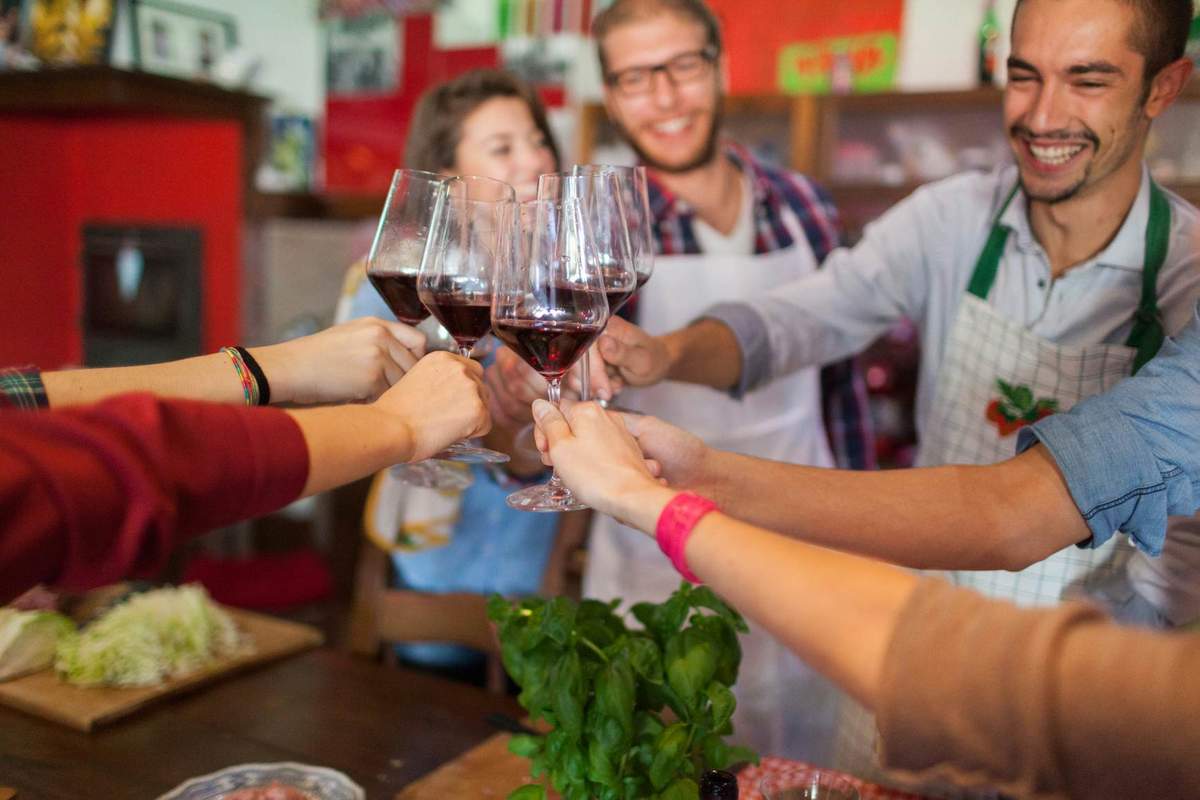
Rome vs Florence: which blockbuster Italian city should you visit?



L-R: Vatican City, Rome. Boboli Gardens from Palazzo Pitti, Florence. Photography/Shutterstock, Cheungjoproduction/Shutterstock
Rome and Florence are must-see destinations in Italy, but if time (or money) is tight, you may need to choose which one to visit. Rome is a heady mix of haunting ruins, awe-inspiring art and vibrant street life. It’s one of the world’s most charismatic cities. While, as surprisingly small as Florence is, this riverside city looms large as the cradle of the Renaissance. Florence is magnetic, and its narrow streets evoke a thousand tales.
With that in mind, here’s how the two cities compare as travel destinations — not in myth, but reality.




Author of the past two editions of Lonely Planet Florence & Tuscany and contributor to Experience Tuscany and Experience Rome, Angelo Zinna grew up in Tuscany and is now based in Florence after many years of moving around.
Having lived in both Rome and Florence, taking sides is a challenge I wasn’t planning to take on. Look, I love Rome – who doesn't? The capital’s raw energy and the Romans’ sarcasm blend with the monumental weight of landmarks dating back millennia, rightly providing Rome with its legendary status. But while awe is guaranteed to anyone who visits, there are good reasons why I ultimately decided to move back to Florence.
Scale is one of them. The sheer size of Rome is likely to overwhelm you, whether you're visiting for a few days or planning to stay longer. After a year in the capital, I felt I had only scratched the surface. Both Rome’s and Florence’s historic centers are inscribed on UNESCO’s World Heritage list, but the former is almost three times larger than the latter – and still occupies only a fraction of the city’s actual surface.
Florence has always felt more human-sized with an inner core, largely closed to car traffic, that is easy to navigate on foot. You won’t need to figure out logistics, transport tickets or metro passes. A comfortable pair of shoes is all you’ll need to explore. The Tuscan capital grants you the liberty to be spontaneous, make detours and set the pace, even if you are short on time.
Don’t be deceived – the smaller size doesn’t mean there’s a shortage of sights. From the perspective of the two cities’ artistic heritage, this is indeed a clash of giants, made more difficult by the fact that some of the greatest Renaissance artists have lived, worked and produced masterpieces in both Rome and Florence. While you won’t find obvious traces of the Roman Empire in Florence, unless you travel up to Fiesole’s archeological park, when it comes to Renaissance history Rome and Florence share more than one might expect.

Michelangelo, Leonardo da Vinci, Botticelli, Filippino Lippi, Raffaello and many others, have left their marks in Florence and Rome, just as influential popes and politicians with family links to both cities. The grotesques decorating Palazzo Vecchio and the Uffizi’s ceilings are one of the many symbols of such a connection – these ancient decorative paintings were rediscovered in Rome in Emperor Nero’s forgotten Domus Aurea in the 15th century and popularized in Florence in the following century.
Perhaps, a key difference is that in Florence the Renaissance is not just a collection of museum exhibits – it’s an era you’ll inhabit. The city transitioned from a medieval city-state to one of Europe’s hotbeds of artistic experimentation and maintained this role for centuries. The density of artworks is unparalleled, but galleries are only part of the allure, as much of the city was shaped during its artistic golden age. The Duomo designed by Brunelleschi, one of the fathers of the Renaissance, reminds you of this every time its red tiles pop up on the skyline, as do the contemplative Boboli Gardens, a template for European court gardens designed when rulers thought nature could be bent to their vision of order and beauty.
Despite its relatively small size, Florence has long maintained a cosmopolitan character. From the 17th-century Grand Tour days, when northern European aristocrats traveled to visit the Medici’s collections before anyone else could, foreign artists, writers, scholars and art students have been drawn to the city, crossing narrow stone paths with the proud, at times provincial, residents who were born here and never left. This uniquely Florentine contrast between local and global outlooks still finds expression today, below the flows of mass tourism.

While Rome shows you its power, Florence prides itself on its craft – past and present. In the Middle Ages, this was a city of guilds and corporations – as the statues on Orsanmichele’s facade remind us – turning into a city of artisans in more recent times. Many of the historic workshops that used to dot the Oltrarno and Santa Croce neighborhoods have disappeared under the pressure of globalization, but a new generation of independent artisans are reviving the scene, keeping this heritage of inventiveness alive.
I won’t even get into the food scene – it may cause a diplomatic crisis. In fact I wouldn’t know where to stand. But one thing I can say: in the time it takes you to exit Rome’s city boundaries, you could be sipping Chianti at its source, on the rolling hills that form Florence’s backyard...




Rome is in a league of her own
Roman resident and author of various Lonely Planet Italy titles, Federica Bocco left her beloved hometown of Naples for the Eternal City over a decade ago, and there is no other place in the world she’d rather live.
Let’s face it: Rome already is the number one destination in Italy. Not because it’s the capital, but because it has more to offer on every level. Rome is on a different scale, any competition is simply unfair.
Rome has variety, it’s got something for everyone. The sheer number of neighborhoods (327!), each with its distinctive identity and vibe, is enough to belittle any opponent, let alone a pocket-sized jewel like Florence with its more compact layout. Trastavere's got bohemian energy with its medieval streets and trattorie, while Monti blends ancient ruins with stylish boutiques and Testaccio remains one of the best neighborhoods in the entire country for food. Florence, one-tenth the size of Rome, cannot compete.
When it comes to what you can visit, it’s not just about how many monuments there are (uncountable, in Rome), but also their diversity. I hate to play this card, but come on, Rome is the Eternal City. On any given street, you may walk past buildings dating back to antiquity, the Middle Ages, the Renaissance, Baroque and Modernity coexisting like they’re not living testaments of over 2,000 years of history. Just walk down Via dei Fori Imperially and you'll pass the Colosseum, medieval Torre delle Milizie, Renaissance Palazzo Venezia and the baroque Chiesa del Santissimo Nome di Maria, all within 15 minutes. Florence is the unquestioned pearl of the Renaissance but it can't boast such a range.

In ancient times, Rome’s nickname was Caput Mundi, head of the world. Rome was built to conquer far and wide, and today it steals visitors’ hearts, no matter what their interests are. You enjoy history? Easy. Head straight to the Roman Forum and Palatine Hill, offering three millennia of history in one archaeological site. Archaeology? Don’t get me started. Music? You've got the Auditorium Parco della Musica and its year-round events. Street art? Visit the Ostiense neighborhood.
Rome is like a generous grandma who just wants to feed you – pasta, culture, jokes – and there is more than enough for everyone. Florence, bless her, is too small to be as giving and she suffers from her popularity. Tourists have to wait in line for a sandwich, for museums, for pictures of iconic landmarks. In Rome, if the Vatican Museums are packed, you can pivot to the Galleria Borghese or Capitoline Museums, a short distance away.
Language also plays its part in Rome's appeal. The Romanesco dialect is down-to-earth, of the people, without rules or limitations, made to serve comedy, to be understood and to bridge gaps. It’s quick, full of guttural sounds, to be shouted and sung. Rome’s dialect is also practicality-driven: when a letter or syllable is not needed, it’s cut. On the other hand, Florentines pride themselves for their elegance, with their soft consonants and aspirated, barely there Cs, whispered in their sonnets of courtly love.

Last but not least, Rome is a melting pot. Tourists aside, it is home to expats from any nationality. Walking the streets of the Eternal City, you come across people from all over the world, see the colors of their flags, hear their languages and interact with their heritage and traditions. You can learn so much more than just ancient history here; if you are willing to put yourself out there, Rome will make you a more rounded person, a global citizen. It is a place where everyone, no matter where they’re from, can find community.
There is no competition: Rome is the most beautiful city in the world, even the ancients knew it. As Horace invoked in his most famous hymn, “May you never see anything greater than Rome.”















